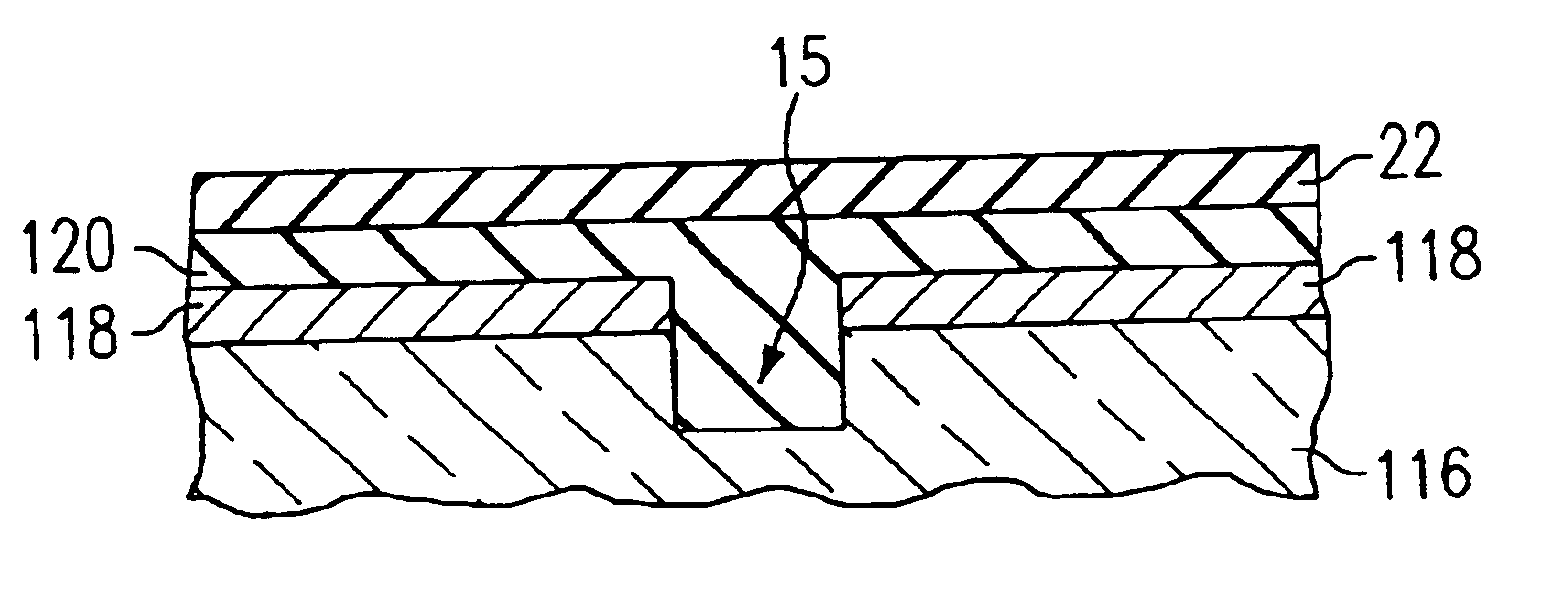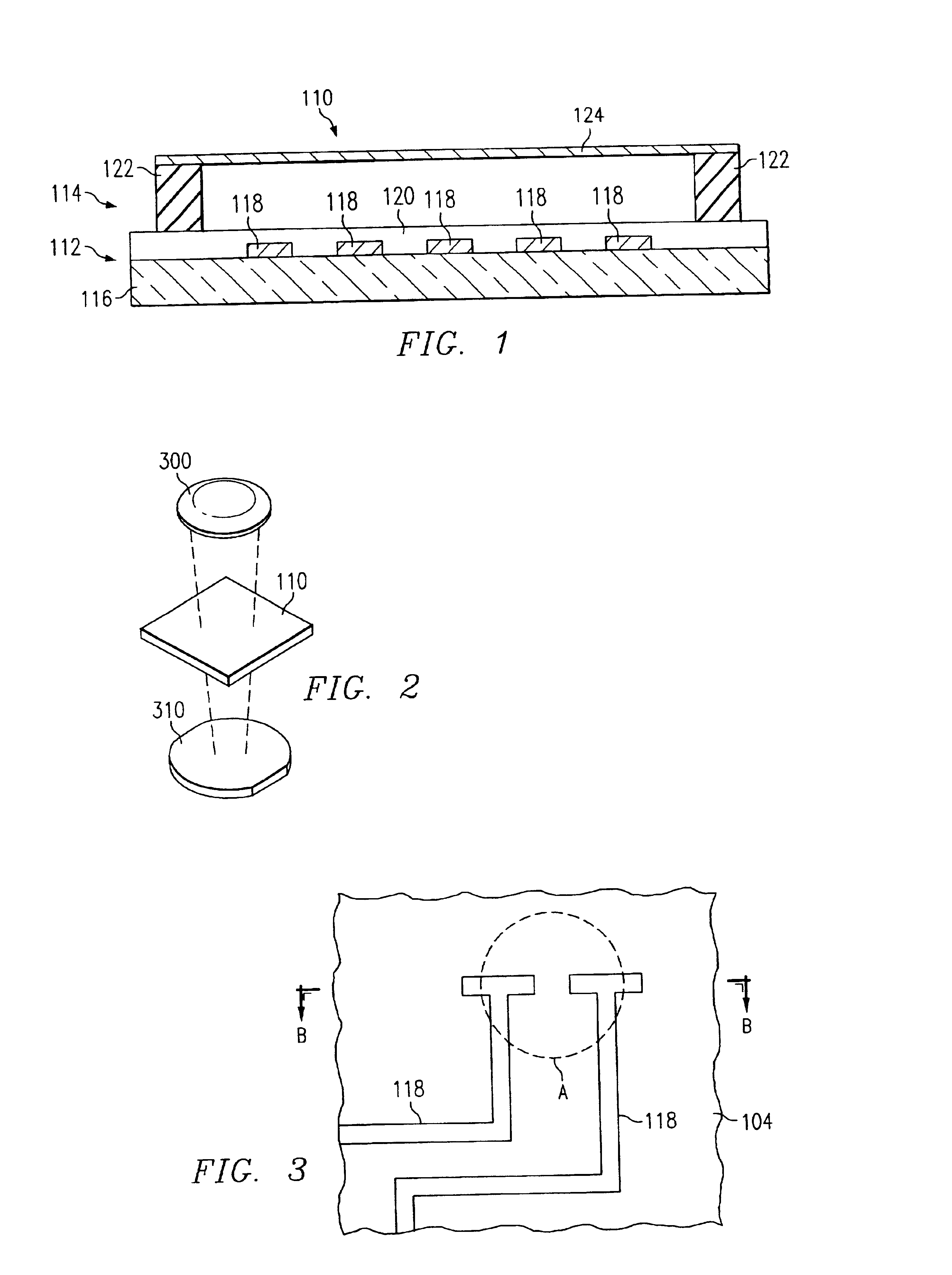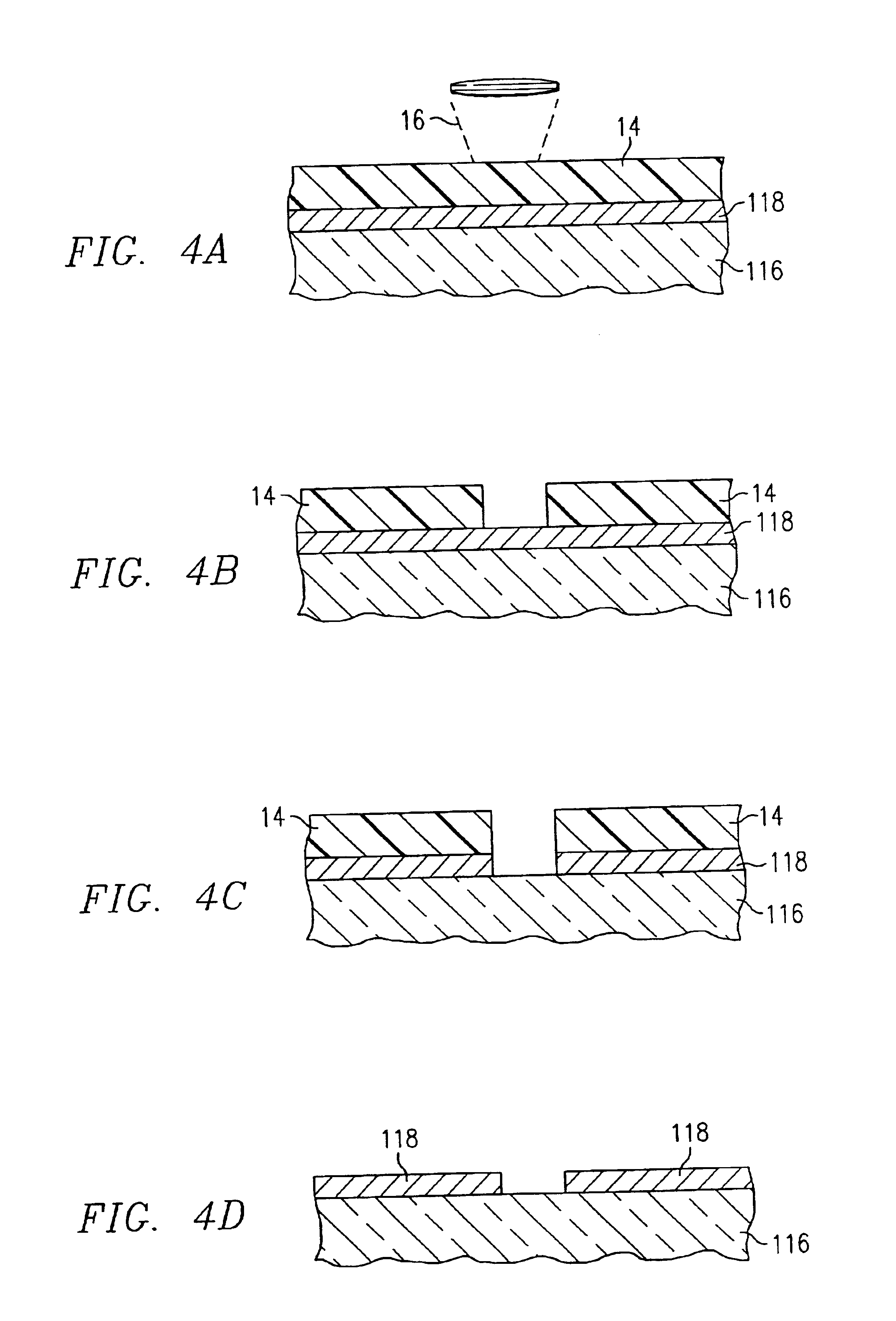Damage resistant photomask construction
a technology of photomasks and construction methods, applied in the field of photolithography, can solve the problems of inability to repair, damage to photomasks, and inability to repair, and achieve the effect of reducing the risk of damage from esds and greater resistance to photomask pattern damag
- Summary
- Abstract
- Description
- Claims
- Application Information
AI Technical Summary
Benefits of technology
Problems solved by technology
Method used
Image
Examples
Embodiment Construction
Preferred embodiments of the present invention and their advantages may be better understood by reference to the example process and structures illustrated in FIGS. 1 through 7.
FIG. 1 illustrates a cross-sectional side view of a photomask assembly 110 according to a first example embodiment of the invention. In that embodiment, photomask assembly 110 includes a photomask 112 (otherwise known as a “mask” or “reticle”) coupled to a pellicle 114. Photomask 112 includes a substrate 116, a pattern of optical absorbers 118, and, as described below, a protective layer 120. As explained in greater detail below with reference to FIG. 3, optical absorbers 118 form a pattern on a surface of photomask 112. For example, the image may correspond to a layer of an integrated circuit, for use in manufacturing integrated circuits.
For instance, FIG. 2 depicts a lithography system in which a lamp 300 projects electromagnetic radiation (EMR) through photomask assembly 110 to reproduce the photomask patt...
PUM
| Property | Measurement | Unit |
|---|---|---|
| electrical resistivity | aaaaa | aaaaa |
| wavelength | aaaaa | aaaaa |
| wavelength | aaaaa | aaaaa |
Abstract
Description
Claims
Application Information
 Login to View More
Login to View More - R&D
- Intellectual Property
- Life Sciences
- Materials
- Tech Scout
- Unparalleled Data Quality
- Higher Quality Content
- 60% Fewer Hallucinations
Browse by: Latest US Patents, China's latest patents, Technical Efficacy Thesaurus, Application Domain, Technology Topic, Popular Technical Reports.
© 2025 PatSnap. All rights reserved.Legal|Privacy policy|Modern Slavery Act Transparency Statement|Sitemap|About US| Contact US: help@patsnap.com



